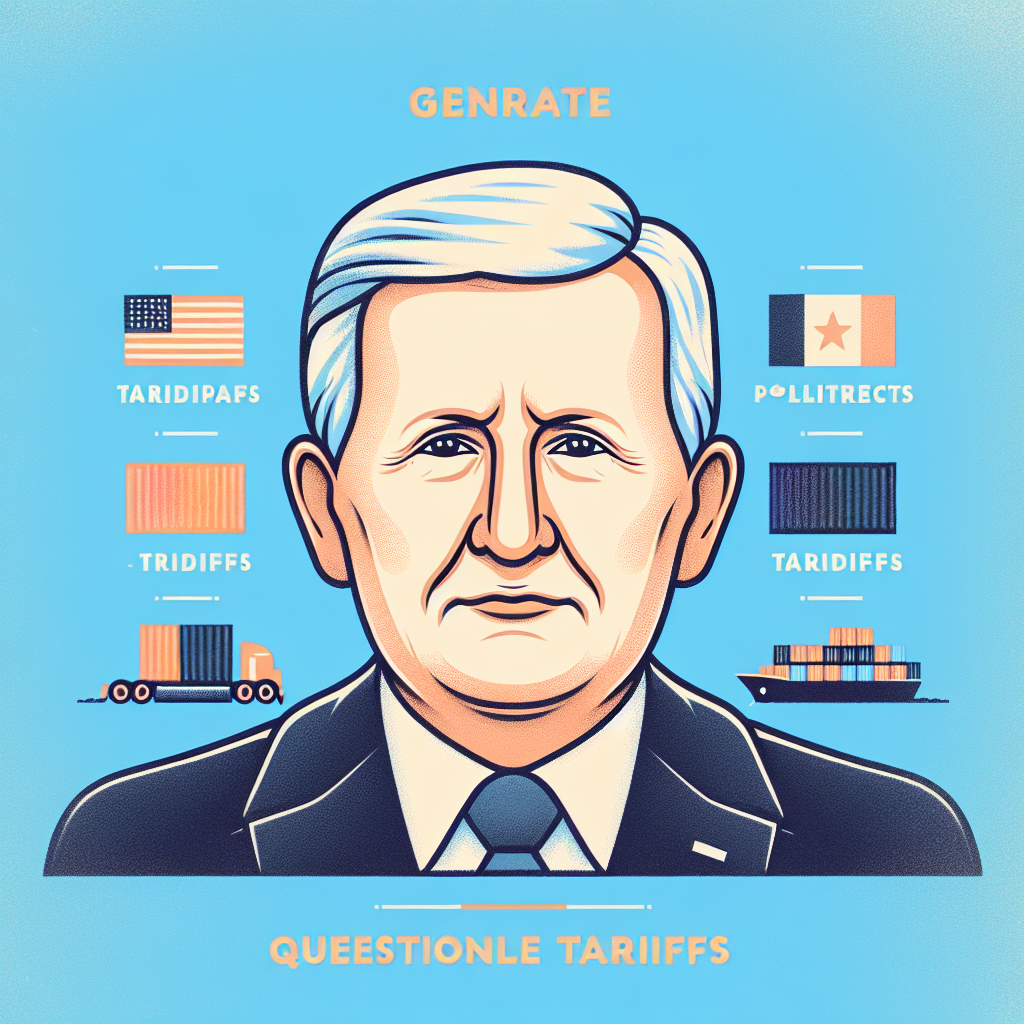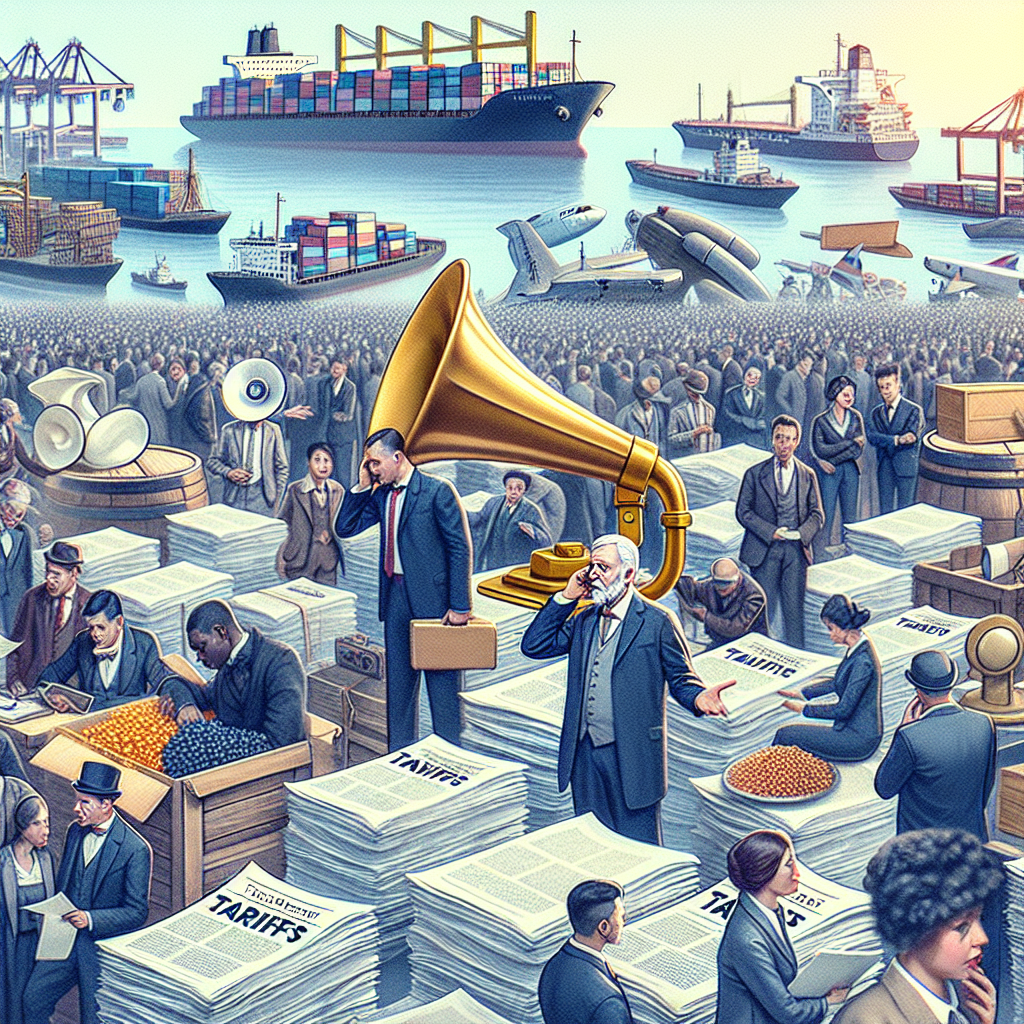On a recent Wednesday, the Supreme Court engaged in a lengthy examination of President Donald Trump’s authority concerning tariffs imposed through executive orders. The justices expressed skepticism about whether these tariffs were within the president’s legal powers, particularly in light of challenges from small businesses and states. This case underscores the ongoing debate surrounding executive power and its limits, especially in matters of international trade.
The Legal Framework of Presidential Tariffs
The core of the legal argument revolves around the International Emergency Economic Powers Act (IEEPA), a federal statute enacted in 1977. Under this law, the president can invoke special powers to respond to threats that originate outside the United States and pose a risk to national security, foreign policy, or the economy. Specifically, Section 1702 grants the president the authority to regulate imports and exports during a declared national emergency.
In this instance, Trump has relied on the IEEPA to impose two distinct sets of tariffs. The first, referred to as the “trafficking” tariffs, targets imports from China, Canada, and Mexico, justified by Trump’s assertion that these nations have not adequately addressed the flow of fentanyl into the U.S. The second set of tariffs, known as “reciprocal” tariffs, applies a general tariff of 10% on imports from nearly all countries, with heightened rates for specific products from select nations.
Arguments Presented in Court
During the oral arguments, justices raised concerns regarding the breadth of Trump’s authority under the IEEPA. A significant point of contention was whether the economic rationale provided by the Trump administration constituted a legitimate national emergency. Many justices appeared to align with the position of the plaintiffs, asserting that the tariffs exceeded the powers granted to the president.
The plaintiffs, representing small businesses, argued that these tariffs have inflicted severe economic harm and disrupted supply chains. They contend that the president’s actions are not merely regulatory but constitute a substantial overreach of executive power. The legal implications of this case could redefine the boundaries of presidential authority in matters of trade and economic regulation.
Potential Outcomes and Implications
The Supreme Court’s decision on this matter could have far-reaching effects on future executive actions related to tariffs and trade. If the court rules against Trump, it may set a precedent that limits the scope of executive power under the IEEPA. Conversely, a ruling in favor of the administration could embolden future presidents to take similar actions without legislative approval.
As the justices deliberate, the economic impact of these tariffs continues to unfold. Small businesses across the country are closely monitoring the situation, as many rely on imports for their operations. The outcome of this case will not only influence the immediate landscape of tariffs but also shape the legal framework governing international trade in the years to come.

| Type of Tariff | Target Countries | Justification |
|---|---|---|
| Trafficking Tariffs | China, Canada, Mexico | Fentanyl flow control |
| Reciprocal Tariffs | All countries | Trade deficits |
As the case progresses, the implications of the court’s ruling will likely resonate beyond the immediate parties involved. The discussion surrounding executive power, especially in the context of trade and tariffs, is likely to remain a hot topic. For further insights into this ongoing legal battle, consider exploring trump's tariff showdown and the nuances of trump v. anderson.
The recent oral arguments presented before the Supreme Court regarding President Donald Trump’s tariffs have revealed a significant level of skepticism among the justices concerning the extent of the president’s authority under federal law. The case revolves around the legality of the tariffs imposed through executive orders, which many believe may exceed the powers granted to the president. This legal challenge not only impacts the economic landscape but also raises questions about the balance of power between the executive branch and legislative authority.
The Legal Framework of Trump’s Tariffs
At the heart of the Supreme Court’s deliberations is the International Emergency Economic Powers Act (IEEPA), a law enacted in 1977 that empowers the president to respond to threats against national security, foreign policy, or the economy. The IEEPA allows the president to regulate the importation or exportation of property when a national emergency is declared. In this context, President Trump invoked the IEEPA to justify a series of tariffs aimed at addressing what he described as an unusual and extraordinary threat posed by foreign nations, particularly in connection with trade and drug trafficking.
Trump’s initial set of tariffs, often referred to as the trafficking tariffs, targeted imports from China, Canada, and Mexico. The rationale behind these tariffs was the assertion that these countries were not doing enough to prevent the influx of fentanyl into the United States. This claim was part of a broader narrative where Trump sought to highlight the need for stringent measures to protect American citizens. Furthermore, the reciprocal tariffs imposed a blanket 10% tax on imports from nearly all countries, with even steeper tariffs on specific products from various nations. These actions were framed by Trump as necessary steps to protect the national economy and security.
Challenges to the Tariffs
The legal challenges to these tariffs have been brought forth by several small businesses and state entities, arguing that the tariffs have imposed undue economic burdens. The plaintiffs contend that the tariffs exceed the powers granted to the president under the IEEPA, as they argue the president’s claims of national emergency do not meet the legal criteria established by the statute. The Supreme Court justices, during the oral arguments, expressed concerns about the broad scope of the powers being claimed by the president, suggesting that such authority could lead to overreach and potential abuse.
As the court deliberates, the implications of this case extend beyond the immediate economic concerns. The outcome could redefine the limits of presidential power regarding trade and commerce, potentially impacting future administrations. Legal experts have noted that the court’s decision will likely hinge on the interpretation of the IEEPA and whether the president’s actions align with the intended scope of the law. For those interested in the ongoing developments, examining the trump's tariffs duties may provide further insight into the legal arguments being presented.

The Broader Implications of the Court’s Decision
The ramifications of the Supreme Court’s ruling could extend into various sectors of the economy, affecting not only small businesses but also international trade relations. Should the court side with the challengers, it could set a precedent that limits the scope of executive power in economic matters. Conversely, a ruling in favor of the president might embolden future administrations to utilize similar measures without sufficient checks on their authority.
Moreover, the ongoing discourse surrounding this case highlights the tensions between state and federal powers, especially in the context of economic regulation. The justices’ inquiries during the oral arguments suggest a cautious approach to balancing national interests with individual rights and state sovereignty. Observers are closely monitoring this case, especially in light of its potential to influence future legal battles over executive authority. For those tracking the developments, the updates from trump v. anderson offer valuable perspectives on the evolving legal landscape.
As the Supreme Court prepares to issue its ruling, the nation awaits the outcome with bated breath, recognizing that the implications of this case will resonate far beyond the immediate context of tariffs. The decision will not only shape the future of trade policy but could also redefine the parameters of presidential power in the realm of economic regulation. Legal analysts are keenly aware of the potential for this case to serve as a pivotal moment in the ongoing conversation about executive authority, particularly in light of the complexities surrounding national security and economic stability. For those interested in the legal ramifications of recent events, the verdict regarding the trump assailant verdict may also offer relevant insights into the intersection of law and politics.
The recent oral arguments before the Supreme Court have raised significant questions regarding the extent of President Donald Trump’s authority to impose tariffs through executive orders. Several justices expressed skepticism about whether the president’s actions exceeded the powers granted to him under existing federal law. This legal scrutiny comes in the wake of challenges from various small businesses and states, who argue that the tariffs implemented by the Trump administration are not only excessive but also unconstitutional.
Legal Framework Underlying the Tariffs
The core of the legal argument revolves around the International Emergency Economic Powers Act (IEEPA), enacted in 1977. This legislation allows the president to address unusual and extraordinary threats to national security, foreign policy, or the economy that originate from outside the United States. Specifically, Section 1702 permits the president to regulate imports and exports during a declared national emergency. Critics of the tariffs argue that the conditions necessary to invoke this law have not been met, thereby questioning the legitimacy of the executive orders issued by Trump.

In February, the Trump administration began imposing tariffs targeting goods from countries such as China, Canada, and Mexico, citing the need to combat the influx of fentanyl into the United States. Additionally, reciprocal tariffs were established, which included a general 10% tariff on imports from nearly all nations, with even steeper tariffs on specific products from various countries. Proponents of these tariffs maintain that large trade deficits present a substantial threat to the nation’s security and economy.
Judicial Skepticism and Implications
During the Supreme Court proceedings, a majority of justices appeared to align with the plaintiffs challenging the tariffs. Their skepticism suggests a potential reevaluation of presidential powers concerning trade regulation under emergency conditions. The implications of this case are profound, as they could redefine the limits of executive authority in economic matters, particularly in times of perceived crisis.
As the court deliberates, the outcome could set a precedent for how future administrations utilize the IEEPA to impose tariffs or other trade restrictions. The tension between executive power and legislative oversight in matters of trade is not new, but this case could catalyze a significant shift in how such powers are interpreted and exercised. The ongoing debate around the legality of Trump’s tariffs underscores a broader discussion about the balance of power in U.S. governance.
Furthermore, the implications extend beyond legal interpretations; they affect small businesses across the nation. Many of these entities argue that the tariffs have imposed serious economic burdens, disrupting supply chains and increasing costs. The court’s ruling may ultimately influence not only the administration’s trade policies but also the economic landscape for countless American businesses.
For more insights into the integrity of the Trump administration’s actions, including the implications of these tariffs, you can explore the trump administration integrity discussions. This ongoing legal battle highlights the complexities of executive power and its impact on the economy, with potential ramifications that could resonate for years to come.